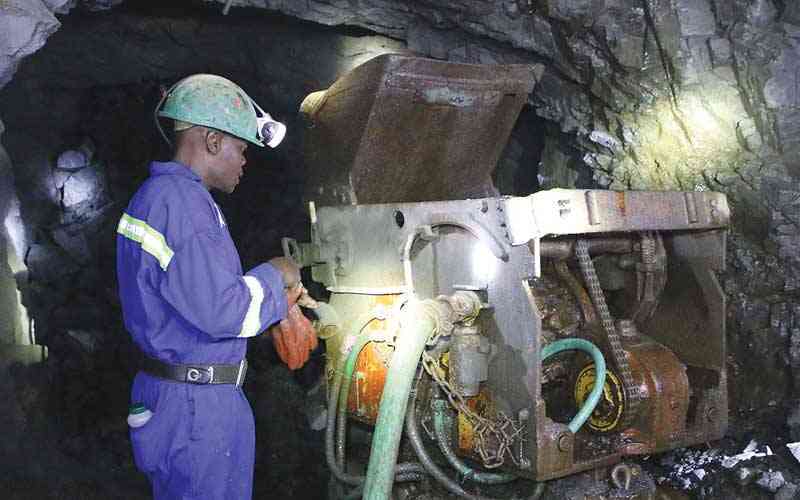
SHAMVA Gold Mine, owned by Kuvimba Mining House (KMH), says the development of its US$140 million open pit project at Shamva Hill is at an advanced stage, with pre- and bankable feasibility studies have been completed.
Government owns 65% of Kuvimba, which in 2020 acquired Shamva from Metallon in a wave of mine asset purchases.
Shamva had ceased operations prior to the Kuvimba takeover because it was having problems raising funds to stay in business despite possessing one of the largest undeveloped gold resources in the sector.
Speaking to journalists during a tour of the mine on Friday, Shamva Gold Mine general manager Gift Mapakame said the project under development would help boost gold production for the group.
“Where do we see ourselves in the next 10 or 20 years from now? We have invested in knowledge, exploration and evaluation and we’ve got a major project brewing. This is called the Shamva Hill Open Pit project,” he said.
“Instead of going deeper, we want to come back on the surface because we believe we have identified a resource that we can exploit from the surface at a profit. So we have done a bit of some work around this thing called the Shamva Hill Open Pit project.”
Added Mapakame: “We have built a couple of holes and we have done a pre-feasibility study and a bankable feasibility study to that effect.
- ZimAlloys ready to switch on its biggest furnace
- Zisco deal gets Cabinet nod to sell iron ore
- Govt blocks US$400m platinum deal
- Kuvimba pumps US$100m into Great Dyke platinum project
Keep Reading
“At this juncture, we’re seated with a project that has got close to 1,3 million ounces at a grade of 1,40 grammes per tonne and our technical and financial model shows us that its net present value is about US$140 million now and a discount rate of 8,5%, internal rate of return of 29% and has got a peak funding requirement of US$126 million.
“So, this is a project that we are waiting on. We are now at the risk evaluation stage. We’re looking at the gaps that have been left by the work that we’ve already done and at the same time we are now probing EPC [engineering, procurement and construction] to see if we can actually be able to have partners to start developing the project.”
The general manager believes the timeline from construction to production is about two years, depending on securing a development partner.
“We are almost looking at about a year or one and half years to start mine construction or preliminary capital activity on this project.”
The project has a break-even gold price of US$1 151 per ounce, resulting in an all-cost margin of 26%. The payback period is two to three years from the start of production.
Since 2020, Mapakame said they were able to process 520 000 tonnes of ore per year from the underground complex, resulting in gold production of slightly below 700 kilogrammes per year.
He said their operating cost was high at about US$1 450.
“For those that follow you know these numbers, I’m sure you would agree that is slightly a bit high for a typical gold mining operation like ours. But like I mentioned earlier, we still have to endure the transportation cost to Freda Rebecca Mine,” Mapakame noted.
“But otherwise if we were processing at our own facility, that cost would have gone down to about US$1 200.”
For the past financial year, the company achieved steady ore production at an average of 43 000 tonnes per month, translating to 500 000 tonnes per annum.
Output has averaged between 60kg and 63kg per month.
“I think this financial year we started in April, we are basically targeting to increase our annual gold production. I think we have targeted to achieve 770kg and this is essentially going to be enabled by an increased average grade,” he said.
“We want to be mining at 1,83 grammes per tonne. So far, we are achieving around 1,8 grammes per tonne which is close and I think the optimism in the increase in production is now coming in because of those capital activities that we’re talking about.
“When a mine is running, you should always be drilling, you should always be exploring, you should always be evaluating so that you create more options with your ore volume.”
Kuvimba has extensive interests in gold, nickel, lithium, chrome and platinum.
It has acquired several mining businesses since its founding, including Bindura Nickel Corporation, Great Dyke Investments, Jena Mine, Sandawana Mine, Tiger and Club, Globe and Phoenix, Zimbabwe Alloys, among others.










